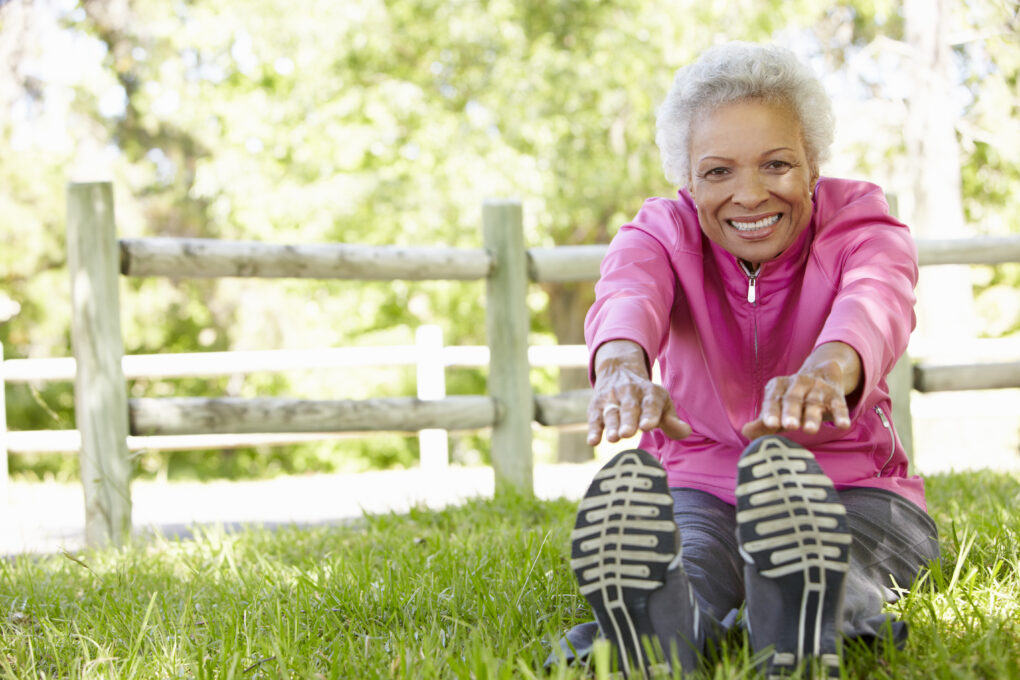Cancer patients are often encouraged to stay active for best results during treatment. However, some patients in active treatment often feel guilty because they can’t always accomplish the exercising they hope to do. Whether it’s 30 minutes of cardio exercise for 3 to 5 days a week or keeping up with other people in a group exercise class for survivors.,
“Exercise is medicine” for people living with cancer. Just like medicine, a dose of exercise differs from person to person.
All exercise for people in active treatment should be individualized and be discussed with your medical team before starting. The purpose of exercise during active treatment is to maintain your current physical state, not necessarily to get stronger and stronger. If you are inactive, your physical state may go down due to strong medicine, radiation, and surgeries. Cancer patients may maintain their current physical strength by doing the right amount of low to moderate exercise. That means you can finish your treatment with fewer physical challenges.
Each person’s physical state will follow a different pattern during treatment. You should be physically active when you have good days. When your blood count is not good, and you have nausea, diarrhea, and fatigue, your body needs rest. Listen to your body and choose wisely when to be active and when to rest.
All these low to moderate-intensity activities are good for patients going through treatments.
Walking is the best exercise during your treatment. Take a walk 3 to 5 days a week or more if you are feeling up to it. Set manageable goals. Your body may have been through a lot, so start small, maybe taking 5-10 minutes at a time. You can’t walk more than 2 minutes? Then walk for 2 minutes at a time! Start where you are now. Cardio exercises like walking will maintain your heart and lung strength. By taking a walk, you can also keep up your lower body muscle and bone strength through your treatment.
Cooking is an excellent exercise. Ditch your electric mixer. Stir batters by hand instead. Cooking usually includes standing, squatting, lifting, reaching high shelves, chopping, washing dishes, etc. These physical movements are exercise!
Household Chores, such as shopping, vacuuming, washing your car, sweeping, going to get your mail, dusting, folding laundry, putting away groceries, getting up and down from the chair and gardening, etc., will all benefit you.
Fun things to do, like playing with your children or grandchildren, playing catch with your dog, playing with your cat, marching in place, or walking around your living room for 5 to 10 minutes, and dancing to music can be good exercise.
If you get tired or have pain during or after your daily physical movements, you might have done too much. Do not use up all your energy by doing exercise. Always listen to your body. You need to reserve energy to heal damaged cells from your treatments. Also, it’s good to reserve your energy for other daily activities with your family and friends. People tend to do things until they feel pain or fatigue. That is a little too late. Learn to stop before you get tired and stop before you start feeling pain.
Fatigue is the number one side effect of treatment, and sometimes people don’t have the energy to do anything. Simple breathing and range of motion exercises will lessen your fatigue level. I have attached a link to my YouTube video channel to show you some examples of simple movements you can do. You can do these exercises while you are sitting on the chair and these body movements can stimulate lymph nodes, promote lymph circulation, and improve your immune system.
If you can, get personal training from physical therapists, occupational therapists, who specialize in oncology. They can give you appropriate exercises for your situation. Especially if you are a Stage 4 patient, you should avoid specific movements and be cautious when doing strength training, like lifting weights and using exercise machines. A professional can closely monitor your movements. Check out Cancer Lifeline’s gentle exercise offerings to help get you started.
Getting cancer treatments is one of the hardest parts of your cancer journey. Maintaining your body strength during active treatment with the right dose of exercise is essential during this part of your journey, just like chemotherapy, radiation, and surgeries. Exercise is medicine.

